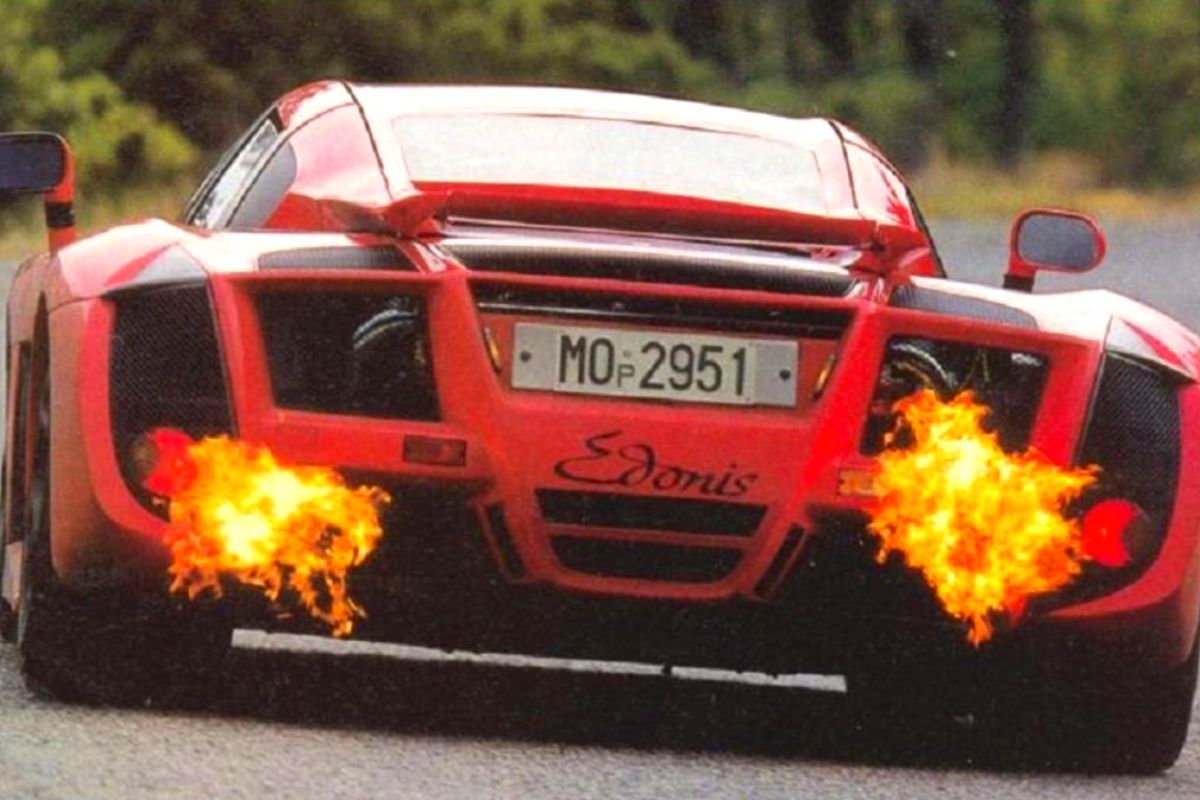
In 1987, Italian businessman Romano Artioli bought back the rights to the Bugatti name, which had been in the hands of Hispano-Suiza since the 1960s. He relaunched the brand, giving birth to the troubled Bugatti EB110, presented in 1991. Unfortunately, the economic recession of the early '90s, insufficient orders and deep internal disagreements quickly killed the project, and Bugatti Automobili SpA went bankrupt in 1995, before the Volkswagen group bought the rights in 1998.
The father of the F40 at the helm
After Bugatti Automobili went bankrupt, a handful of former employees formed a new company called B.Engineering, financed mainly by Jean-Marc Borel, former Bugatti vice-president. The initial idea was to develop a competitor to the Lotus Elise, but the costs are unimaginable. The other option? Start from the EB110 base and produce the ultimate supercar.
When Bugatti's assets are auctioned off, B.Engineering sells back to Campogalliano part of the remaining stock of parts used in the production of the EB110, including engines and 17 unfinished monohulls. The new entity began developing a new sports car under its own name, based on the EB110 chassis. Among the names involved were Federico Trombi (formerly in charge of homologation), Gianni Sighinolfi (formerly in charge of the development workshops) and above all Nicola Materazzi, father of the Ferrari 288 GTO and F40, who replaced Paolo Stanzani and took part in the EB110's frustrated gestation period, before leaving the company.
Based on the EB110, but with freer aerodynamics
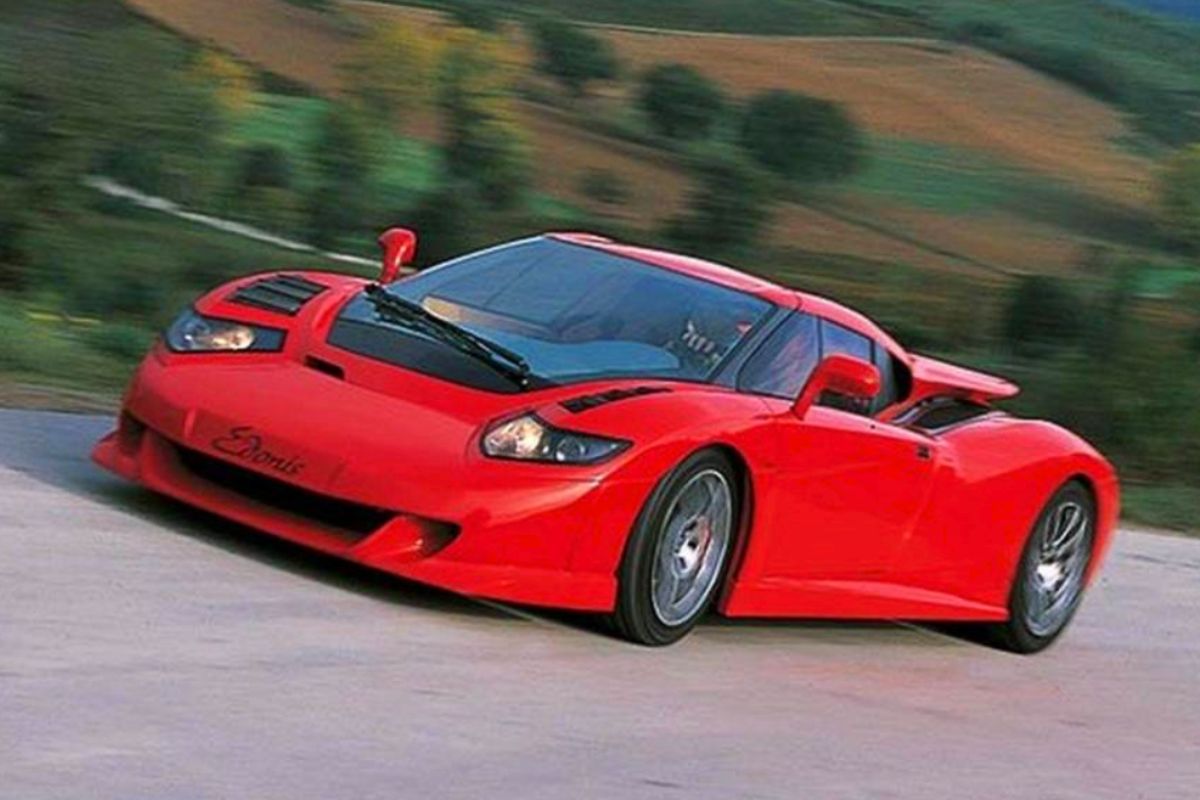
Designed for ultimate driving pleasure, the supercar is named Edonis, after the Greek word "Hedoné", meaning pleasure. Based on the Bugatti EB110 Super Sport, it uses the latter's carbon-fiber chassis, but with extensively revised styling. Thanks to the good relations between Materazzi and Scaglietti, the latter directed the production of the bodywork for the first two prototypes towards aluminum, a technique that the Modena craftsmen had been using for decades for low-volume production to reduce tooling costs.
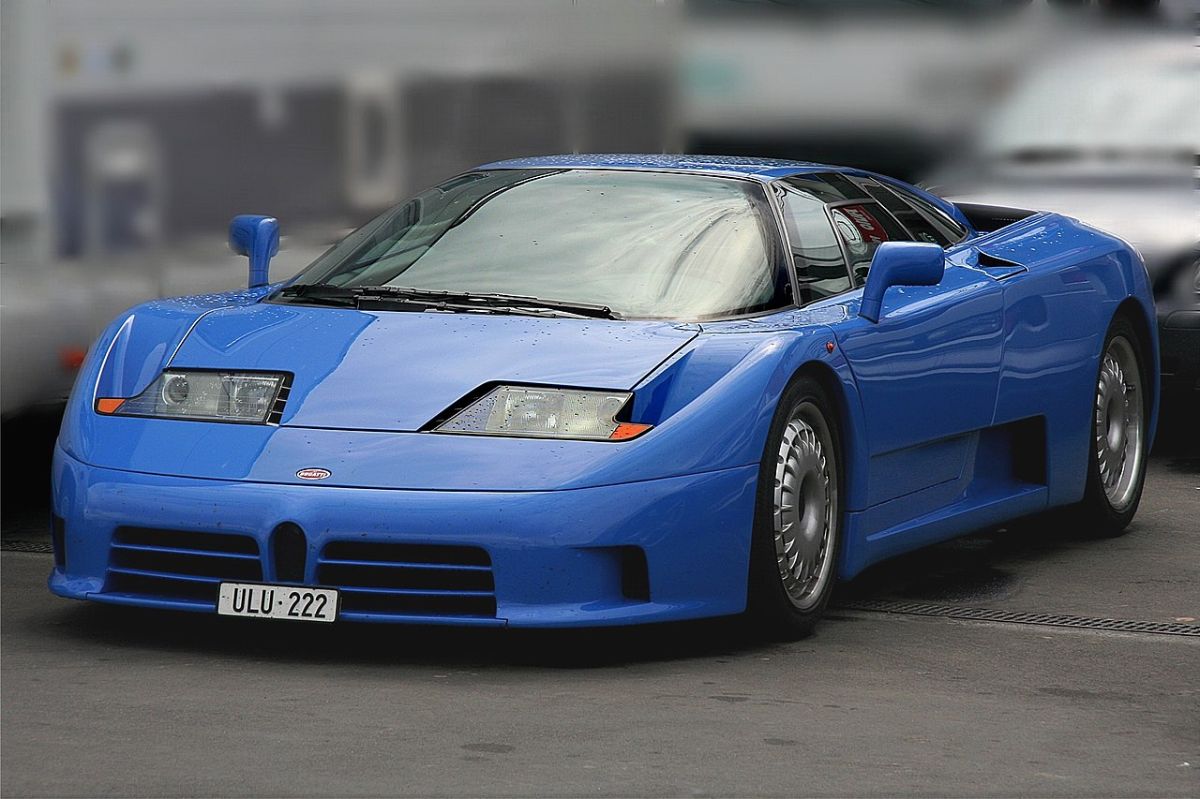
When it comes to design, Marcello Gandini, the father of Countach, Diabo and others, is no longer in charge. Cizeta-MoroderMarc Deschamps, a Belgian designer from Bertone who designed the Lamborghni Jalpa featured in the film Rocky IV. Deschamps takes his revenge after his EB110 design was not selected. The brief was clear: dress the car in an aerodynamically sharp bodywork to achieve a target top speed of 100 m/s, or 360 km/h. Marc Deschamps was able to design the Edonis with fewer constraints than Gandini had for the EB110, allowing him greater freedom, resulting in a highly distinctive and original design.
Baroque supercar
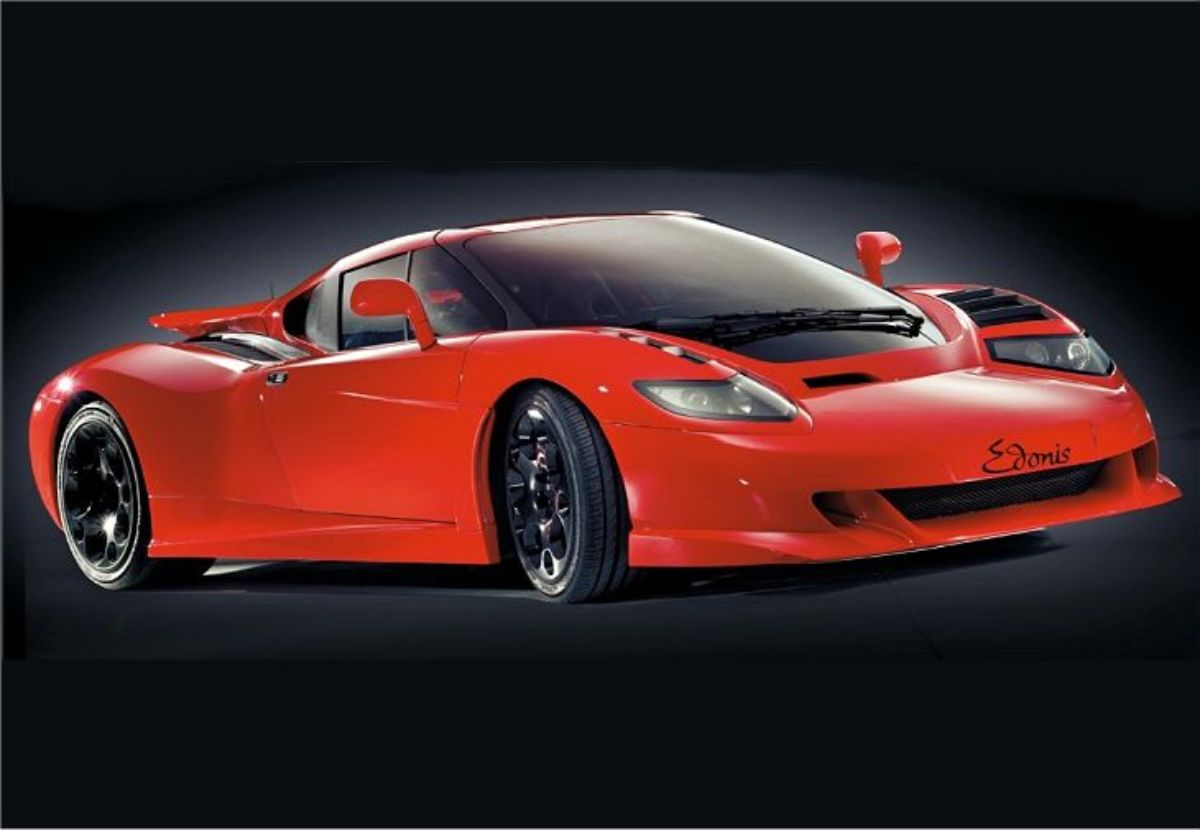
The Edonis moves away from the angular design of its original car to adopt a more modern, curvaceous design. The prominent fender-mounted headlamps, like those on the EB110, are topped by ducts and take on a boomerang shape, a complete departure from the angular blocks of previous generations of supercars. Viewed from the front, however, the Edonis adopts a rather strange and atypical look. An asymmetrical cooling duct between the headlamps helps cool the brakes.
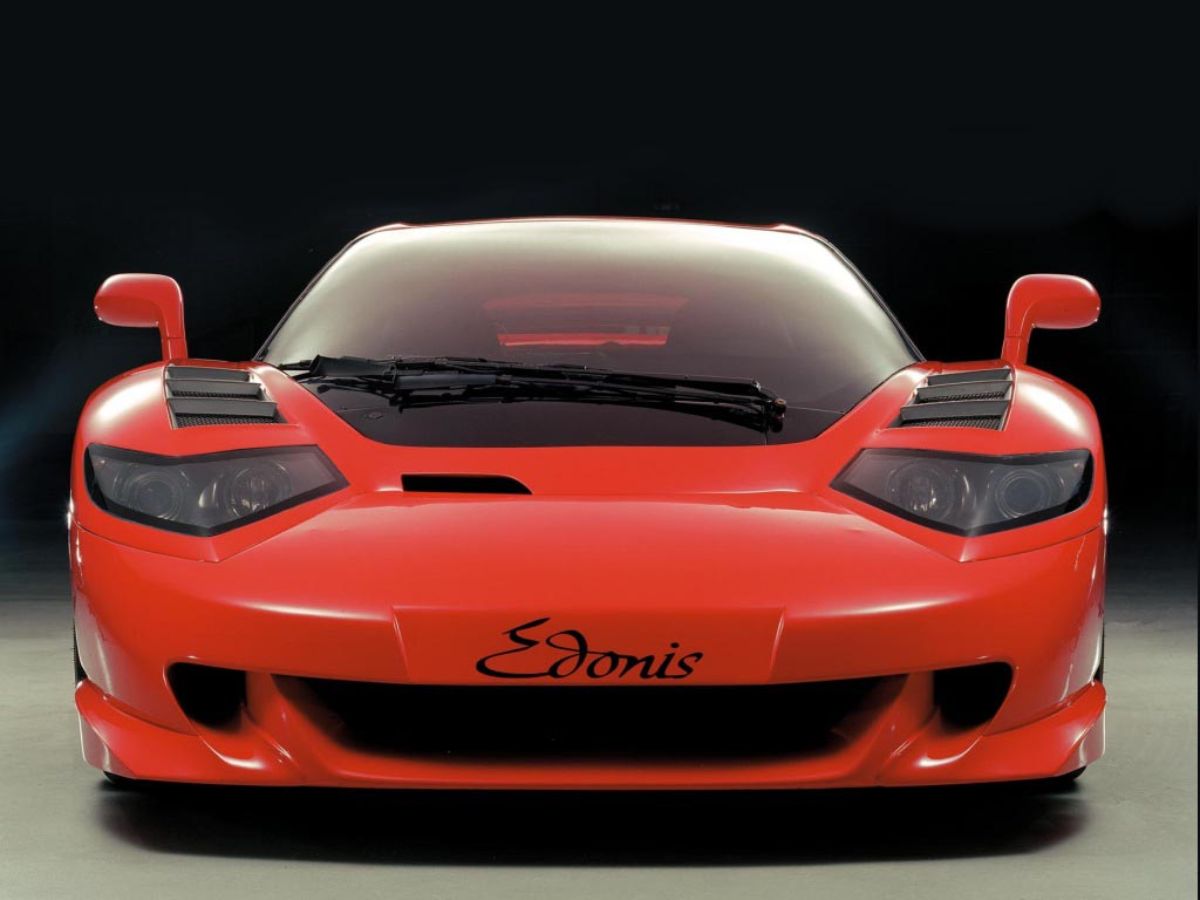
The search for aerodynamic efficiency avoids many unsightly appendages, and the Edonis, in profile, is a beautiful, slender arrow. The car has a wide rear end, with large openings to cool the engine, and taillights integrated into the two side grilles. It's quite spectacular, if not elegant... A small fixed rear spoiler helps generate downforce. The interior is just as exotic and atypical, with a profusion of meters and rounded frames on the console, which itself takes a curved form extending from the cockpit to the central tunnel! Ergonomics is clearly not the priority of this whimsical interior. In his interviews, Materazzi explains that the bodywork was completed very quickly in 47 days, the bumpers having been received in mid-November, just 1? months before the presentation scheduled for New Year's Day 2001. Yes, the Edonis was intended to be the very first car of the 21st century!
A revised engine
When developing the EB110, Materazzi had never been convinced of the effectiveness of the four turbochargers and all-wheel drive system, often claiming that it was a way of "making the easy difficult by adopting the unnecessary".
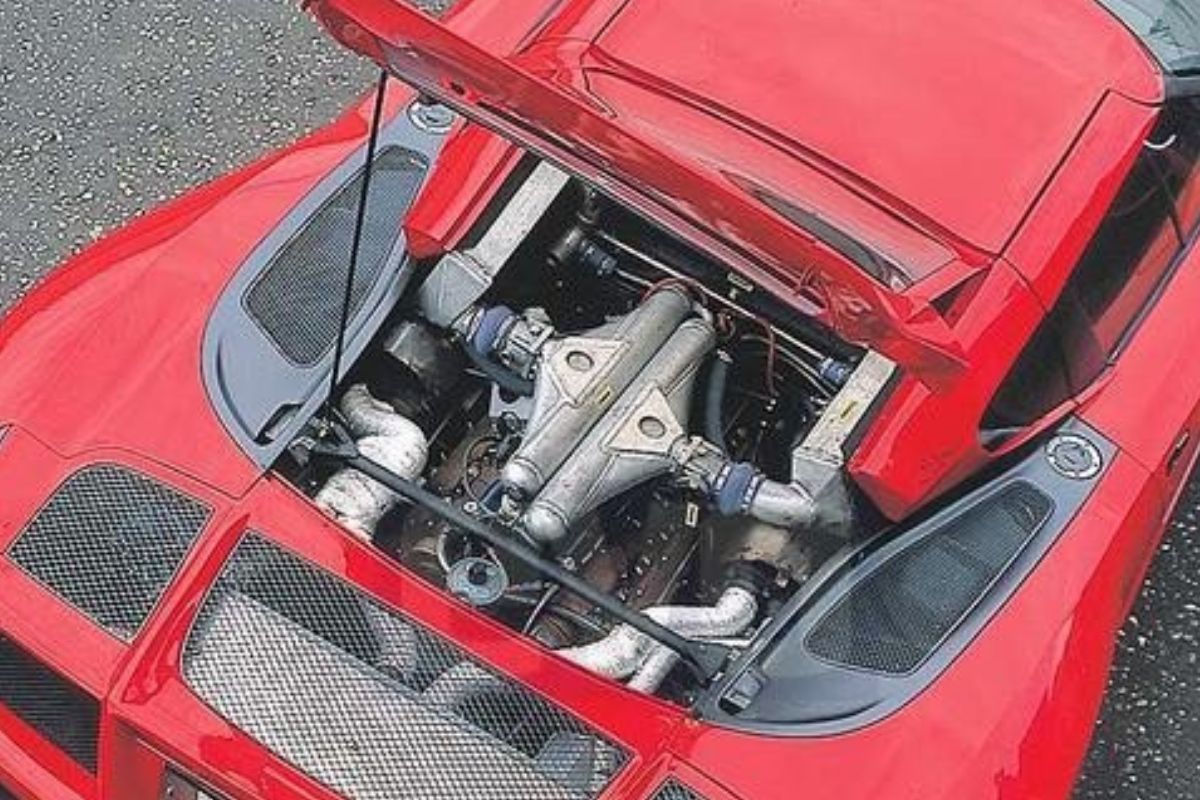
For the Edonis, the engine's displacement was slightly increased from 3.5 to 3.76 liters, and the four small IHI turbochargers were replaced by two larger IHI units: this was less striking from a marketing point of view, but more efficient, giving more flexibility at low revs and less inertia in the delivery of turbocharged power. The modified engine generates 680 HP at 8,000 rpm and 735 Nm of torque at 3,200 rpm. The four-wheel drive system used in the EB110 is replaced by a rear-wheel drive system, reducing weight by 70 kg. The EB110 gearbox, integrated into the engine, has been retained.
A supercar without "modern cretinities".
With almost 700 HP for just 1,300 kilos, the Edonis boasts a power-to-weight ratio of 480 hp/ton and a specific engine power of 181 hp/liter. Devoid of the slightest aids and "all the modern cretinities", to paraphrase Materazzi, apart from ABS, it's not to be put in the hands of just anyone. On paper, the car boasts a top speed of 365 km/h and can accelerate from 0 to 100 km/h in 3.9 seconds.
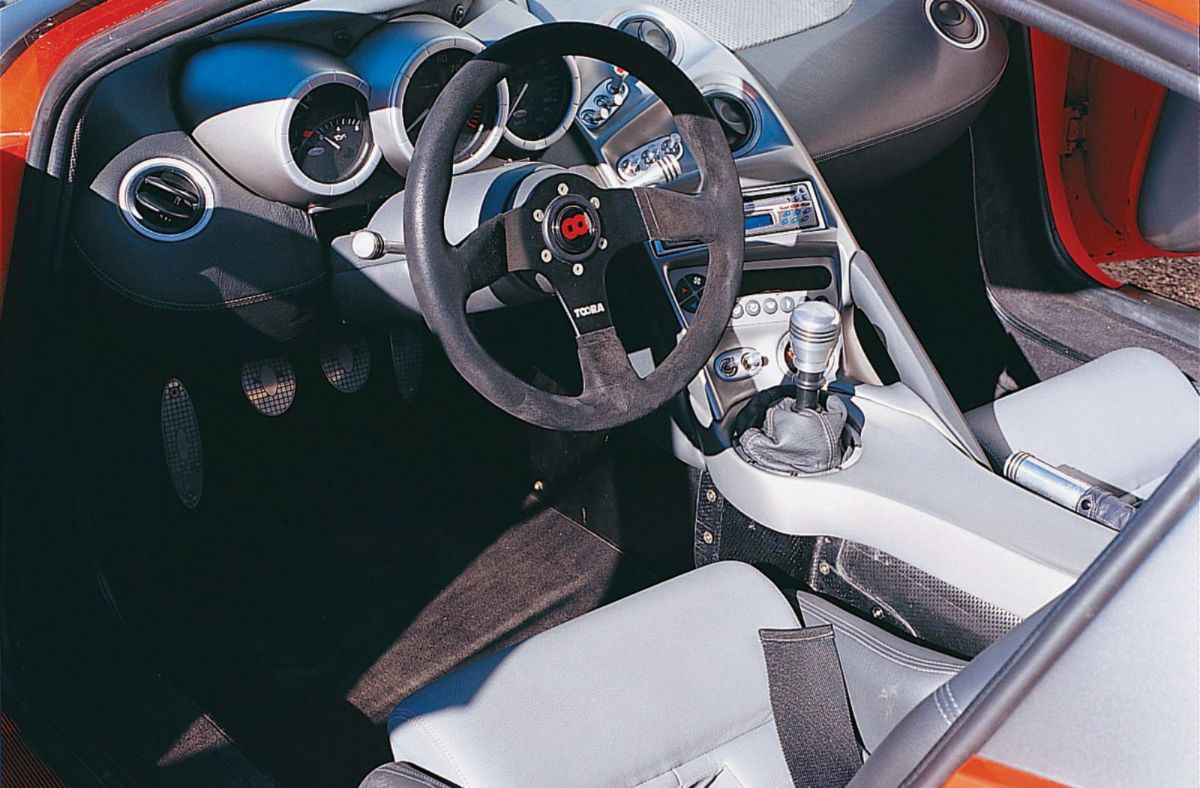
For those who had the chance to try it out, its character was exceptional and its dynamic qualities superior to the benchmarks of its time. Perhaps one of the last specimens of a breed of supercars that has definitely disappeared with the rise of electronics and the transfer of technology from F1 to the road. In the summer of 2002, the French magazine Sport-Auto organized a supercar comparison at the Nardo circuit in Puglia. The winner was the 715-hp Edonis, fitted with Michelin Pax System tires, which set a circuit speed record of 359.6 km/h. Just 0.4 seconds short of Materazzi's target!
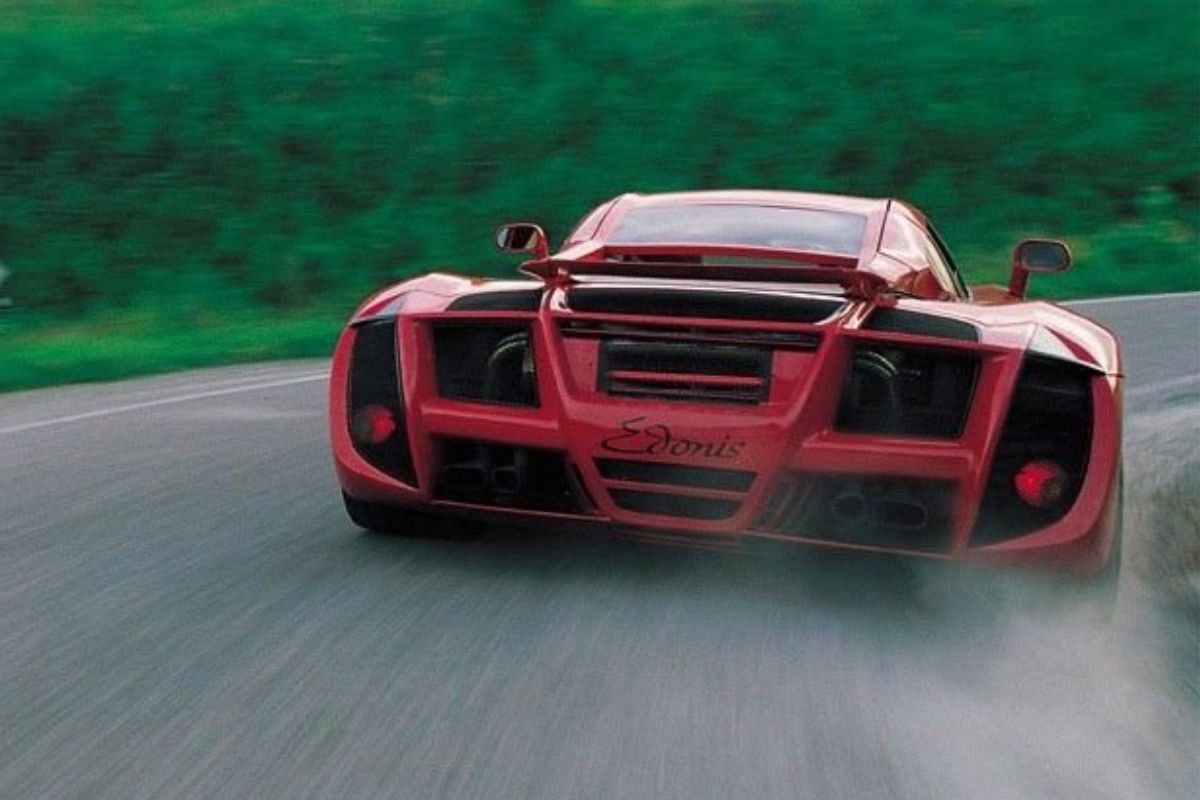
B Engineering planned to build 21 cars from the remaining EB110 chassis, originally built by Aérospatiale, with a price tag of around €760,000 today! But after receiving a lot of press coverage and taking part in a number of motor shows, the project fizzled out after the first two prototypes, leaving no trace since 2004.

She had many talents in her creation, but her design was still strange, especially the front...
I was lucky enough to catch a glimpse of it during the Supercar Rallye organized in summer 2001 by the same magazine Sport-Auto between Paris and Nice via the Morvan, the Jura and the Alps.
I'd found it more strange than fascinating or impressive, although it was that too. And since then, until this article, nothing!
Was ist daran schön?
I was lucky enough (during a school trip with the Lycée Louis Marchal de Molsheim) to visit the warehouse where it was assembled, in Modena if I'm not mistaken.
It was very impressive to see a supercar emerge from this small workshop. A very nice souvenir where we visited the Ferrari museum and got a glimpse of the Lamborghini company.
Nonostante l'impegno profuso, la tecnologia e le prestazioni, l'auto era essenzialmente scialba. Tutto qui, mancava l'estetica, c'era la funzionalità ma non è stata sufficiente.